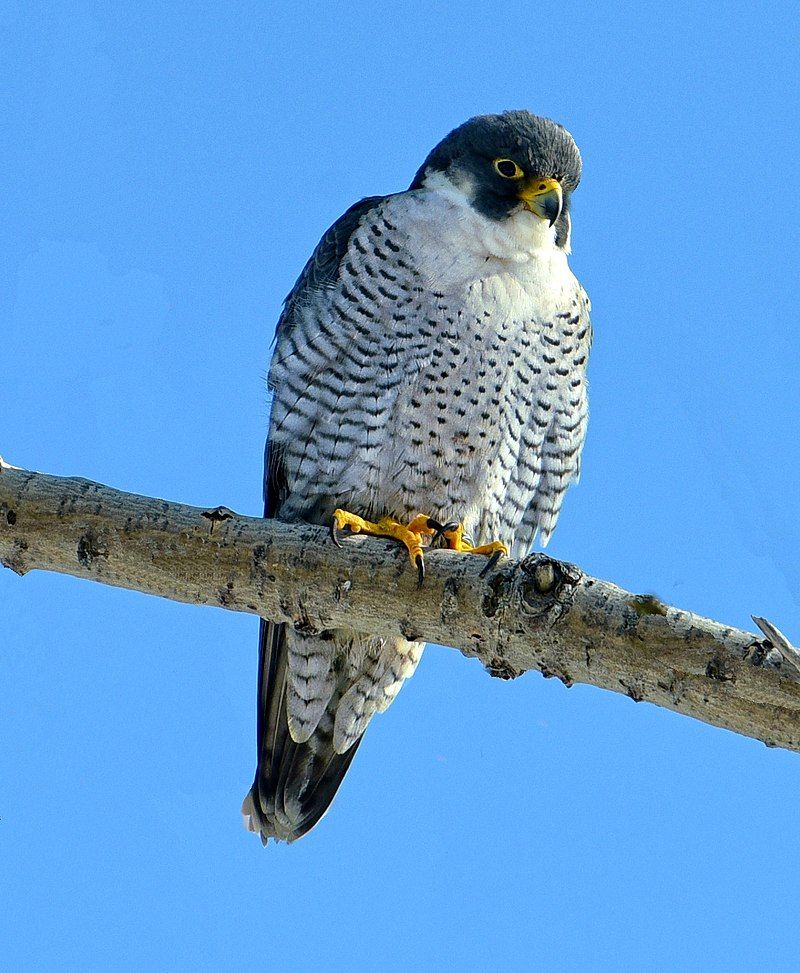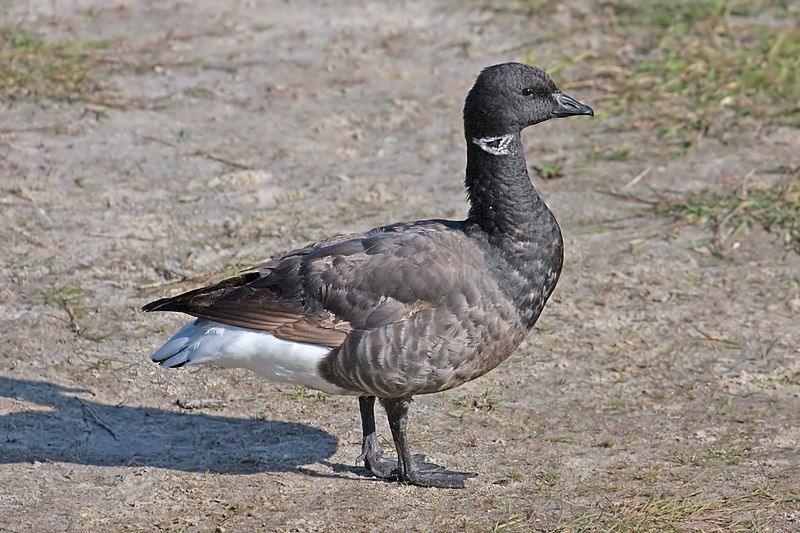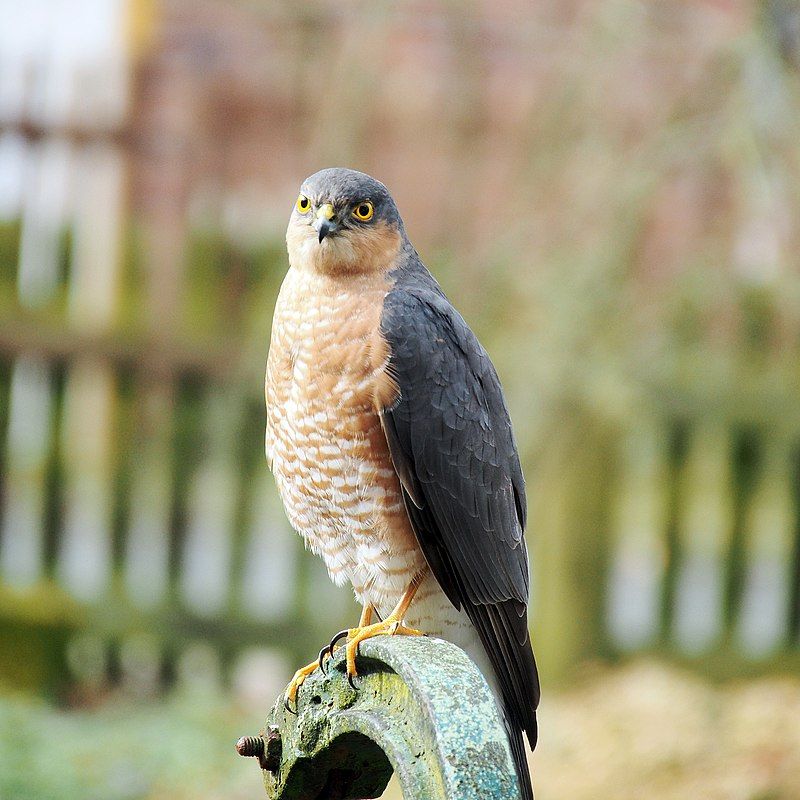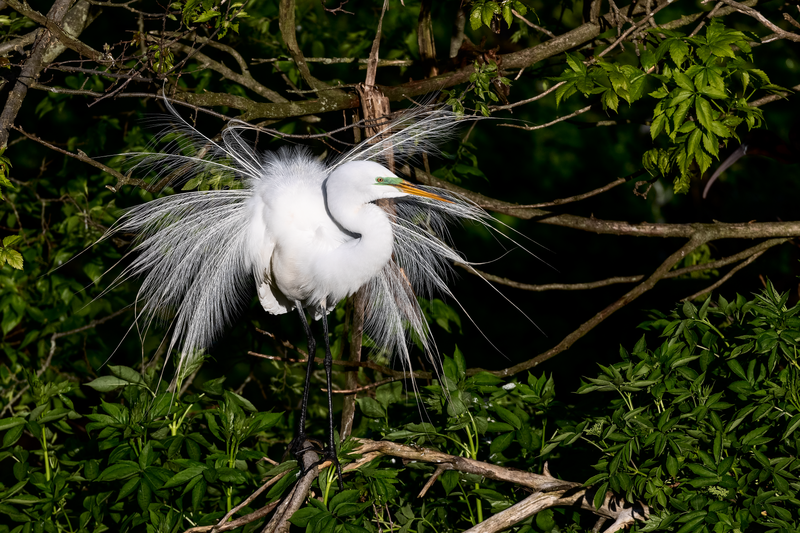Welcome to Exeter, a city in Devon, England, home to many delightful bird species! This vibrant city is a haven for birds of all shapes and sizes and is the perfect place to observe various birds in their natural habitat.
From the majestic swans of the River Exe to the colorful finches of the city parks, there are plenty of opportunities to enjoy a variety of birds in Exeter.
The variety of habitats in the local area provides a rich and diverse selection of bird species, allowing visitors and locals alike to appreciate the beauty of these feathered friends.
Whether you’re a keen birder or just looking for an enjoyable nature walk, Exeter is the perfect place to explore.
12 Birds Found in Exeter
If you are a bird lover, you might want to visit Exeter, a city in Devon, England, that hosts a variety of bird species. Exeter is a vibrant city with a rich history and culture, but it is also a great place to enjoy nature and wildlife.
Here are 12 birds that you can find in Exeter and its surroundings.
1. Cetti’s Warbler
Cetti’s warbler is a small, brown bush-warbler found in many parts of Europe, Africa, and the East Palearctic. It is named after the 18th-century Italian zoologist Francesco Cetti.
The Cetti’s warbler is easily identifiable due to its small size and brown coloring. It is found in southern and central Europe, northwest Africa, and as far east as Afghanistan and northwest Pakistan.
Males and females of this species are indistinguishable, as they look the same. This species is found mainly in dense vegetation near water sources, such as reed beds, shrubs, and bushes. It feeds primarily on small insects but may also consume some fruit and seeds.
It is a territorial species and can often be heard singing during the breeding season to mark its territory.
It is usually found in pairs or small groups but may also form larger flocks during migration. The Cetti’s warbler is an integral part of the natural ecosystem, as its diet of insects helps to control insect populations.
It also helps to keep the vegetation in its habitat healthy by consuming fruits and seeds. The Cetti’s warbler is a widespread species, but its numbers have declined recently due to habitat loss and other environmental factors.
It is listed as Least Concern by the IUCN, but its conservation status should be monitored carefully to maintain healthy populations.
| Kingdom | Animalia |
| Phylum | Chordata |
| Class | Aves |
| Order | Passeriformes |
| Family | Cettiidae |
| Genus | Cettia |
| Species | C. cetti |
2. Short-Eared Owl
The short-eared owl is a species of owl that belongs to the family Strigidae. It is found in a variety of grasslands around the world and is one of the most widespread species in its family.
Owls belonging to the genus Asio are known as eared owls because of their tufts of feathers that resemble mammalian ears. These “ear” tufts may not always be visible, but they are distinct enough to identify these owls as part of the Asio genus.
The tufts may help the owls identify other species members and provide camouflage against predators. They may also help the owls communicate by making sounds and changing the position of the tufts.
| Kingdom | Animalia |
| Phylum | Chordata |
| Class | Aves |
| Order | Strigiformes |
| Family | Strigidae |
| Genus | Asio |
| Species | A. flammeus |
3. Mute Swan
The mute swan is a species of swan that is a part of the Anatidae family, a group of waterfowl. It is native to various parts of Europe and Siberia, as well as the far northern regions of Africa.
The mute swan is typically a white bird with an orange beak and black legs and feet. They are recognizable by their large size and the V-shaped curve of their necks when they swim.
They are a migratory species, meaning they move from one place to another in search of food and suitable habitats. They typically inhabit wetlands, lakes, rivers, marshes, and other freshwater areas.
Mute swans are gregarious birds, meaning they form social groups and often mate for life. They feed mainly on aquatic plants and eat insects, small crustaceans, and mollusks.
They have a loud honking call when they are alarmed and can also make various hissing and grunting noises. Mute swans are known to be quite aggressive when defending their territory and have even been known to attack people and boats.
They can also fly at speeds of up to 60 miles per hour, making them one of the fastest-flying birds in the world. Overall, the mute swan is a beautiful and fascinating bird species native to parts of Europe, Siberia, and North Africa.
They are highly recognizable, with their white feathers and long necks, and they are an essential part of the natural ecosystem.
| Kingdom | Animalia |
| Phylum | Chordata |
| Class | Aves |
| Order | Anseriformes |
| Family | Anatidae |
| Genus | Cygnus |
| Species | C. olor |
4. Little Egret
The little egret is a beautiful species of bird that belongs to the family Ardeidae. Its main identifying features include its white feathers, thin black beak, and long black legs. The western race of this species has yellow feet, which adds to its beauty.
The little egret is an aquatic bird found in shallow water or on land. It is an opportunistic feeder, consuming many small creatures for sustenance. This includes various types of insects, crustaceans, and small fish.
Its diet is adapted to its environment and changes according to its surrounding area. The little egret can be found in many parts of the world, including Europe, Africa, Asia, and Australasia.
It is an integral part of the local ecosystem and helps to maintain the balance of nature. Its presence also benefits humans, as it feeds on insects that can harm crops or livestock.
In conclusion, the little egret is a beautiful species of small heron that is an integral part of the environment. Its white feathers, slender black beak, and long black legs make it a unique and attractive species.
It is also an essential part of the food chain, consuming a variety of small creatures for its sustenance.
| Kingdom | Animalia |
| Phylum | Chordata |
| Class | Aves |
| Order | Pelecaniformes |
| Family | Ardeidae |
| Genus | Egretta |
| Species | E. garzetta |
5. Peregrine Falcon

The peregrine falcon is a type of bird of prey that is found all over the world. It is a large bird, about the size of a crow, with a blue-grey back and barred white underparts. The black head of the peregrine falcon is its most recognizable feature.
It is also known as the duck hawk in North America. The Peregrine falcon is renowned for its incredible speed. It is one of the fastest birds in the world, capable of reaching up to 240 mph speeds when diving.
This is due to its long, pointed wings, which enable it to fly and dive quickly. Its speed has helped it to catch various prey, including ducks, geese, and other small birds. The peregrine falcon is an integral part of the ecosystem.
It helps to keep populations of other birds in check, helping to maintain a balanced ecosystem. It also plays a role in controlling the spread of disease, as it feeds on sick or injured birds, thus preventing the spread.
The Peregrine falcon is a symbol of strength and power. It is admired and respected for its beauty, speed, and agility and is a famous bird for birdwatchers.
Although it is listed as a threatened species in some countries, its numbers have increased due to conservation efforts.
| Kingdom | Animalia |
| Phylum | Chordata |
| Class | Aves |
| Order | Falconiformes |
| Family | Falconidae |
| Genus | Falco |
| Species | F. peregrinus |
6. Brant

The Brant or Brent goose is a small species from the Branta genus. It is widely distributed throughout the world, with three distinct subspecies.
All three subspecies are migratory birds, wintering along temperate-zone sea coasts and breeding in the high-arctic tundra regions during summer. The Brent oilfield in the North Sea was named after the species due to its abundance in the area.
The oilfield was discovered in 1971 and has since become one of the largest oilfields in the world, with over 500 million barrels of oil extracted since its discovery.
This abundance of oil has helped make the North Sea one of the world’s most important sources of oil and gas. The brant or Brent goose is an iconic species of the North Sea, and its presence is an integral part of the region’s rich biodiversity.
| Kingdom | Animalia |
| Phylum | Chordata |
| Class | Aves |
| Order | Anseriformes |
| Family | Anatidae |
| Genus | Branta |
| Species | B. bernicla |
7. Sand Martin
The sand martin, also known as the bank swallow, collared sand martin, or common sand martin, is a migratory passerine bird in the family of swallows.
It is a widely distributed species, with a range covering most of Europe and the Mediterranean region, extending to the Pacific Ocean.
During the summer months, it inhabits a wide variety of habitats, including banks of rivers, streams, lakes, and coastal areas. The sand martin is a small bird with a slender body, short legs, and a forked tail.
Its plumage is glossy and mainly brownish-grey on the upper parts, with a white underside. It has a white throat and a black stripe running from the bill down the sides of the neck.
Its wings are long and pointed, and its flight is swift and agile. The sand martin is a friendly bird that forms large flocks in migration. It feeds mainly on flying insects, which it catches on the wing. It nests in burrows in sand banks, often in large colonies.
The breeding season is from April to July, with a single brood of 4-7 eggs. The sand martin is a species of minor Concern with a stable population. However, some threats to its survival include habitat loss, pollution, and predation by cats and other predators.
Conservation measures are in place to protect this species and its habitat.
| Kingdom | Animalia |
| Phylum | Chordata |
| Class | Aves |
| Order | Passeriformes |
| Family | Hirundinidae |
| Genus | Riparia |
| Species | R. riparia |
8. Eurasian Sparrowhawk

The Eurasian sparrowhawk is a small bird of prey found within the Accipitridae family. It is commonly referred to as the northern sparrowhawk or simply the sparrowhawk.
Male Eurasian sparrowhawks have a distinctive appearance, with bluish-grey upperparts and orange-barred underparts. Females and juveniles of the species have different plumage, with brown upperparts and brown barring below.
The Eurasian sparrowhawk is a very agile hunter, capable of navigating through dense vegetation and open areas with great skill. It is also capable of high speeds when pursuing prey, making it a formidable predator.
The Eurasian sparrowhawk is an essential species in its habitat, as it helps keep populations of small rodents and other small animals balanced.
| Kingdom | Animalia |
| Phylum | Chordata |
| Class | Aves |
| Order | Accipitriformes |
| Family | Accipitridae |
| Genus | Accipiter |
| Species | A. nisus |
9. Long-Tailed Tit
The Long-tailed Tit, or Aegithalos caudatus, is a small bird found throughout Europe, the Middle East, and parts of Asia. It is a member of the Aegithalidae family, which also includes the Marsh Tit and the Coal Tit.
The Long-tailed Tit is known for its long tail, which is often longer than its body. It is also known for its black and white plumage, with some individuals having a tinge of yellow or grey.
Long-tailed Tits are social birds, often seen in small flocks or large mixed-species flocks. They feed mainly on insects, spiders, and other invertebrates but will also take some seeds and berries.
They nest in holes in trees, constructing a cup-shaped nest out of moss and feathers. The genus name Aegithalos was used by the ancient Greek philosopher Aristotle to refer to particular European tits, including the Long-tailed Tit.
This name is derived from the Greek words digits, meaning “goat-eared,” and kilos, meaning “tail.” It is a fitting name for this species, immediately recognizable by its long tail.
| Kingdom | Animalia |
| Phylum | Chordata |
| Class | Aves |
| Order | Passeriformes |
| Family | Aegithalidae |
| Genus | Aegithalos |
| Species | A. caudatus |
10. Tawny Owl
The tawny owl is a species found across much of Europe, from western Siberia to the westernmost parts of the continent. It is a medium-sized owl with a stocky body and dark-streaked pale underparts. The upper body of the tawny owl can be either brown or grey.
There are seven recognized subspecies of tawny owl, each with its distinctive traits and characteristics.
The tawny owl is a nocturnal hunter and is most active during the night when it searches for small mammals, such as mice and voles, and birds, such as wood pigeons and thrushes, to feed on.
It has a deep, hooting call that can be heard at night and has a keen sense of hearing, which it uses to locate its prey. The tawny owl nests in tree hollows or thickets and typically lays between 3 and 5 eggs each season.
The tawny owl is a widespread species and a common sight in European woodlands. Its population is considered stable or increasing, and its conservation status is of minor Concern.
However, its conservation depends on preserving its natural habitat, which is threatened by human activities such as logging and urban development.
| Kingdom | Animalia |
| Phylum | Chordata |
| Class | Aves |
| Order | Strigiformes |
| Family | Strigidae |
| Genus | Strix |
| Species | S. aluco |
11. Great Egret

The great egret is a bird species that is widely distributed across the world. It is also known by other names such as the common egret, large egret, great white egret, or great white heron.
This majestic bird can be found in four distinct subspecies, which are located in Asia, Africa, the Americas, and southern Europe. The great egret has expanded its range in recent years and can now be found in more northern areas of Europe.
The great egret is a large bird with a wingspan reaching up to 1.7 meters. Its all-white plumage and yellow bill can recognize this majestic species. Its long neck and legs give it a graceful appearance as it soars through the sky.
The great egret is a solitary hunter, although it will sometimes flock with other species of water birds. It feeds on various small fish, frogs, and other aquatic prey.
The great egret is an impressive bird species, and its presence in many parts of the world indicates healthy ecosystems. Conservation efforts to protect this species are essential, as its presence indicates a balanced and healthy aquatic environment.
| Kingdom | Animalia |
| Phylum | Chordata |
| Class | Aves |
| Order | Pelecaniformes |
| Family | Ardeidae |
| Genus | Ardea |
| Species | A. alba |
12. Golden Eagle
The golden eagle is a large bird of prey found in the Northern Hemisphere. It is a member of the family Accipitridae and is the most widely distributed species of eagle.
With a wingspan of up to 2.3 meters, it is a powerful and majestic bird well-known to humans. Golden eagles inhabit many habitats, from mountainous regions to tundra, grasslands, steppes, and even deserts.
They are opportunistic feeders and hunt various prey, such as rabbits, hares, ground squirrels, and other small mammals.
They are also known to take larger prey, such as deer and lambs, occasionally. Golden eagles are migratory birds traveling long distances to winter grounds in warmer climates. During their migration, they are often seen soaring in large flocks.
The golden eagle is magnificent, with its striking golden-brown feathers and piercing yellow eyes. The golden eagle symbolizes power and strength and has been revered by many cultures for centuries.
In some cultures, it is seen as a totem animal and a symbol of courage, strength, and freedom. The golden eagle is an integral part of the ecology of the Northern Hemisphere, and its continued conservation is essential.
| Kingdom | Animalia |
| Phylum | Chordata |
| Class | Aves |
| Order | Accipitriformes |
| Family | Accipitridae |
| Genus | Aquila |
| Species | A. chrysaetos |
Conclusion
The presence of twelve distinct bird species in Exeter highlights the city’s biodiversity and the richness of its ecosystems. The variety of birds observed suggests a healthy environment capable of supporting diverse avian populations.
This diversity not only enhances the aesthetic appeal of Exeter but also contributes to the overall ecological balance, providing important ecosystem services such as pest control and pollination.
As stewards of our environment, it is imperative to continue preserving and protecting these habitats to ensure the continued presence of these birds and the myriad benefits they bring to both the city and its inhabitants.